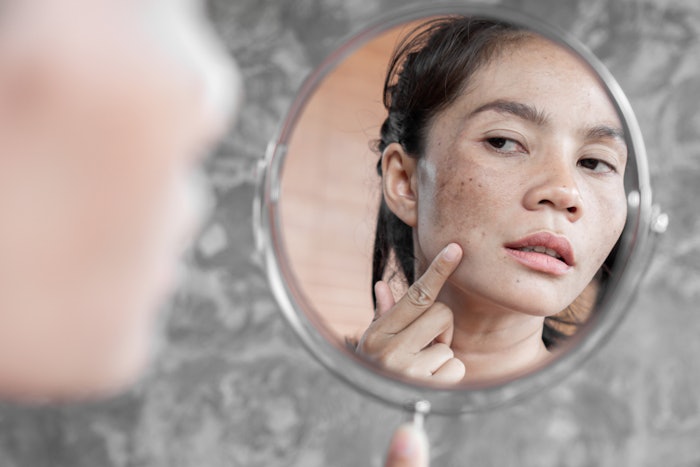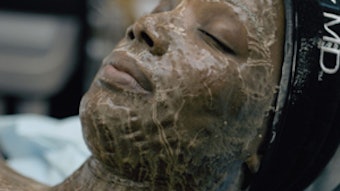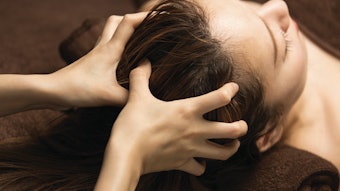
It came from out of nowhere. One day a client may look in the mirror and lean in a little closer—only to discover strange shadows on their face. What the heck?
That, my friend, may be melasma—the Debbie Downer of the skin care world.
As many know, melasma can affect both men and women, but it has a particular affinity for females with a Fitzpatrick skin classification of III to V—the warmer, more olive-toned complexions.
If your client's that woman, she may find herself holding a ticket to one of the wildest rides of her life: the hormone roller coaster. Powered by the endocrine system with its unpredictable dips and dives, this ride can leave them with the dappled souvenirs of melasma. To make things worse, the throes of hormonal shifts and the heat of the sun may also splotch clients.
Melasma typically appears in people between the ages of 20 and 30, and can linger for years. This common condition is marked by patches of discoloration caused by an overabundance of melanin. It usually shows up on the face in mirrored patterns, but can also appear on the chest, upper arms and back.
While melasma is chronic, it’s manageable—with knowledge, consistency and care.
What Triggers Melasma?
Melanocytes are pigment-producing cells in our skin and eyes. When overactivated, they create excess melanin, leading to melasma. Here are common triggers that feed this hyperpigmentation puzzle:
Sun Exposure
Melasma management begins with protection. Clients should use a broad-spectrum SPF 30+ with physical blockers like zinc oxide or titanium dioxide. Chemical sunscreens convert UV into heat—which can worsen melasma.
You might recommend they follow the SunSmart “Slip, Slop, Slap, Seek and Slide” rules:
- Slip on protective clothing
- Slop on sunscreen
- Slap on a wide-brimmed hat
- Seek the shade
- Slide on UV-protective sunglasses
Pro tip: Clients should avoid metal-framed sunglasses—they reflect sunlight and sit right where melasma loves to strike.
Tanning Beds
Tanning beds emit stronger UV rays than natural sunlight—fuel for melanin production. Clients should opt for spray tans instead, but make them aware that skin will be more sun-sensitive in the first 24 hours post-application.
Hormones
Hormonal fluctuations—like those from birth control, pregnancy or perimenopause—are major contributors. Learning their body's optimal hormonal balance is one of the most empowering steps they can take.
Pregnancy can trigger chloasma, or the “mask of pregnancy.” Topical vitamin C and diligent SPF use are safe and effective during pregnancy and breastfeeding.
Genetics
As Richard Dawkins says, “DNA neither cares nor knows, and we dance to its music.”
According to the American Academy of Dermatology, 48% of melasma patients have a relative with the condition. Understanding their skin's natural predispositions is powerful preventive medicine.
Medication
Certain medications like birth control pills, hormone replacement therapy and phenytoin may trigger melasma—and increase sun sensitivity. Clients should make sure they're reading labels and consulting their provider about alternatives or protective routines.
Inflammation
Internal inflammation stimulates melanin production. A clean diet, regular movement and calming practices like tai chi or qigong help reduce systemic inflammation and improve skin resilience.
Heated Environments
Hot yoga, saunas, grilling or working in high-heat occupations (like chefs or welders do) can exacerbate melasma. Clients can stay cool with:
- Portable fans
- Cooling wrist techniques (a method used by Native Americans to quickly reduce body heat)
Stress
Stress, even in micro-doses, impacts skin. Hidden stressors include:
- Red dyes in food and skin care
- Synthetic fragrances
- Highly scented skin care products
Hair removal tip: Waxing exfoliates the skin, making it more vulnerable. Clients can apply aloe vera or calming products post-wax, and should avoid sun exposure for 24–48 hours after treatments like waxing or threading.
HEV Light (Blue Light)
Phones, tablets and screens emit High Energy Visible (HEV) light—a.k.a. blue light—which:
- Damages collagen
- Encourages pigmentation
- Disrupts sleep cycles
Clients can protect themselves with:
- Blue light filters
- Daily SPF
- Blue light glasses
Treatment Options
Though there’s no cure for melasma, there are many treatments to control and improve its appearance.
Topical Options
- Hydroquinone (HQ): Once the gold standard, it's now banned in the EU, Japan and Australia. If using HQ, clients should work with their provider on cycling off periodically to be safe.
- Alternative brighteners:
- Vitamin C
- Vitamin A (retinoids)
- Alpha arbutin
- Kojic acid
- Ferulic acid
- Licorice root extract
In-Office Treatments
- Laser therapy
- Chemical peels, like the Jessner Peel
In my decades of aesthetic work, I’ve found that combining at-home topicals with a series of Jessner Chemical Peels offers safe, consistent results.
Clients should always consult with a licensed esthetician or medical skin care provider to find what works best for theirr lifestyle.
The Melasma Mindset
Remind clients that melasma is manageable—not curable. Successful control is found through:
✅ Knowing and controlling triggers
✅ Consistent use of topical + professional treatments
✅ Smart lifestyle adjustments
Clients can take a cue from Aesop’s legendary fable, The Tortoise and the Hare: slow and steady wins the race.










